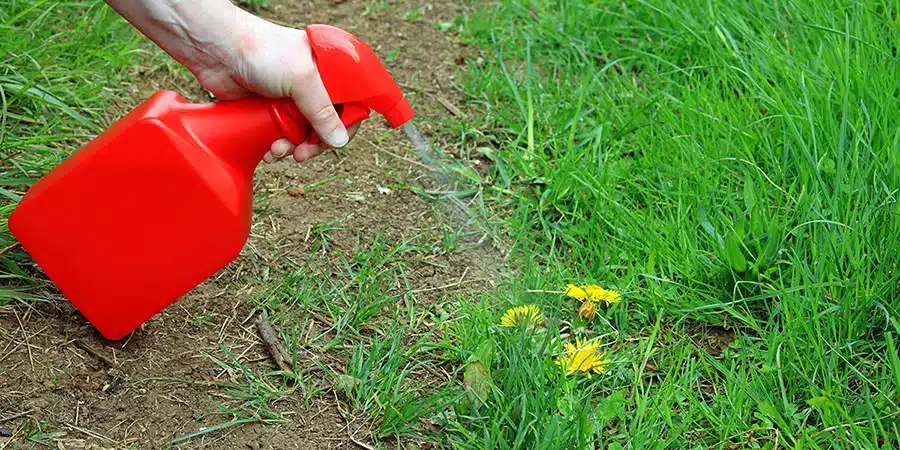There are a lot of challenges that come with keeping a garden at home. One of them is eliminating weed.
If you let them grow, they can easily strip off the nutrients from the soil that are supposedly meant for your plants.
Plus, weeds can also block the sun’s rays which are beneficial for photosynthesis. As a result, your crops may not grow well.
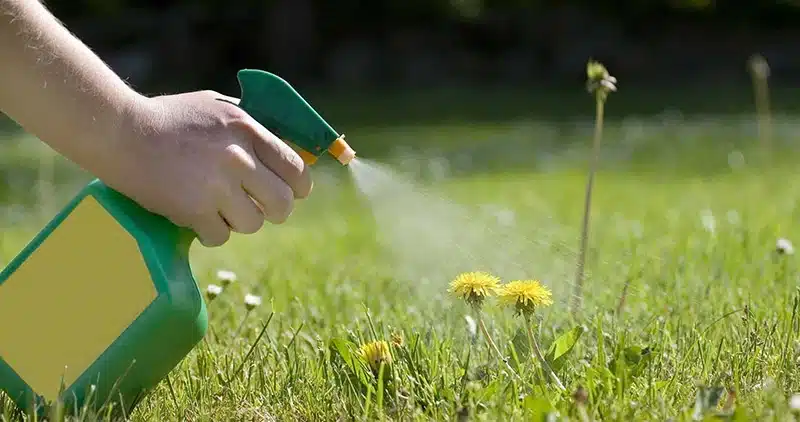
Now, you might be thinking about the ways you can get rid of weed once and for all. Well, worry not! There are actual weed eliminators you can find inside your home.
Below is a list of easy-to-make homemade weed killers you can try for your garden
Salt
When plant root systems absorb salt, it disrupts water balance. This can cause the weed to wilt and die.
You need the following ingredients to make this homemade weed killer recipe:
- The minimum effective ratio is two parts epsom salt to 1 part water.
- Bottle for spraying
The process:
- Mix the salt and water in a spray bottle and wait until it’s properly blended.
- After which, spray the targeted weeds or area.
- Leave the solution. The weeds will eventually die.
We do not recommend you dump salt directly on your weeds. It can damage your crops. Salt can quickly sink into the soil and hinder future growth in that region for a long time.
Baking Soda
Another inexpensive ingredient for weed removal is baking soda. Like sale, it’s also high in salt content. As we mentioned earlier, salt withers leaves and kills the entire weed to the roots.
The process:
If weeds are growing near attractive plants and grass, this strategy works nicely:
- First, try the baking soda method on one or two weeds to see if it’s the correct weed control strategy for your area, significantly if the weeds grow near desirable plants and grass.
- If the weeds aren’t already damp, spritz them with water from your garden hose.
- Ready one teaspoon baking soda and sprinkle evenly on top of the weed leaf.
- Continue doing this step from one weed to another until you finish sprinkling all the weeds.
If weeds are on the sidewalks and driveways:
- Sprinkle baking soda on top of weeds sprouting in the crevices of driveways and sidewalks.
- Sweep any spilled baking soda into the gaps on the driveway or sidewalk.
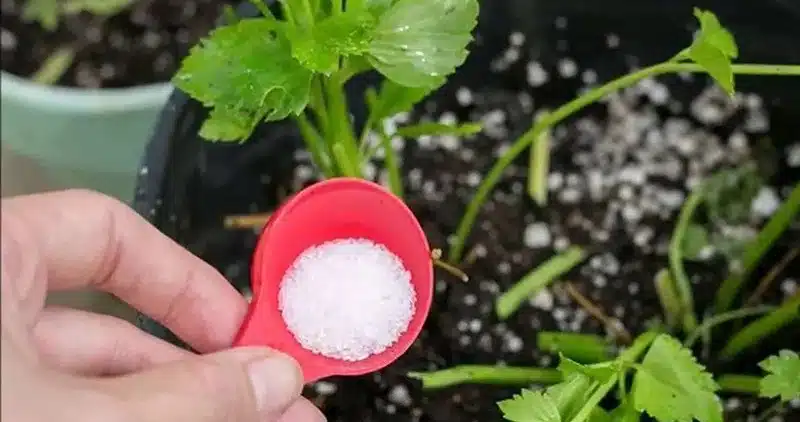
To make this baking soda method effective, make sure to reapply every four to six weeks until the weeds permanently die. Apply baking soda while the weeds are actively growing, usually in the spring or fall.
Baking soda is also effective in the summer, although not as quickly. Irrigate the weeds with 1/2 to 1 inch of water if it hasn’t rained for a week following application. Water aids in the delivery of baking soda to the root zone, where it can work.
Borax
Borax contains sodium borate, a colorless crystal easily dissolved in water. Most households usually use borax as a laundry booster.
However, some studies show that borax is not safe to use near flowering plants or vegetable crops. Also, it is a must to wear gloves during the process to avoid skin irritation.
You will need the following ingredients to make this weed killer recipe:
The process:
- To begin, dissolve 10 ounces of borax in 4 ounces of warm water.
- After completely dissolving the borax, add 2 1/2 gallons of water and thoroughly mix. This mixture treats an area of around 1,000 square feet. However, you may adjust the quantity according to your need.
- Using a garden sprayer in this method can ensure that you are evenly distributing the solution.
Boiling Water
Another effective weed killer is the boiling-water method. The process goes this way: it melts the waxy surface of the weed’s leaf. As a result, it breaks down the cellular structures of the weed.
Plants treated with boiling water become dry within hours or days. Unlike pesticides, the boiling-water way is safe for wildlife and other bodies of water.
It can kill mature or newly grown weeds due to lack of moisture. It is the most environmentally friendly among all methods as it is 100% natural and free from chemicals.
You need the following ingredients:
- Boiling water
- Tea Kettle with a spout
The process:
- Boil water using a kettle.
- Make sure that the water is in a rolling boil state.
- After which, take the kettle off the stove and make sure that the kettle has a spout and a heatproof handle.
- Pour the water directly into the weeds. Do it slowly; avoid pouring into your plant as it may damage it as well.
Water will take longer to reach the bottom of the taproot of plants with long taproots, such as the dandelion.
Other weeds with a fibrous root system don’t require permanent removal at the soil’s surface.
To get the best results:
- Remove most of the leaves and treat the roots with boiling water in the garden.
- When using hot water for weed treatment, be cautious.
- Wear pants and sleeves with closed-toe shoes as a spill or an unintentional splash may happen.
Bleach
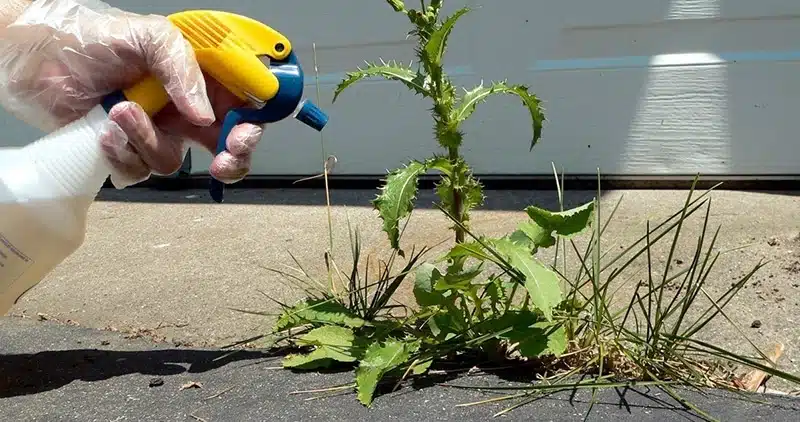
The bleaching method is one of the most critical ways to kill the weed. Being not careful in using this process can kill even your crops and vegetables.
Remember that it is a strong chemical. It can destroy anything it touches in nature. And most of the time, it may cause more harm than good.
Be careful when pouring this near the streams of water as it may damage aquatic plants and animals and cause water pollution.
Ingredients to make this weed killer recipe:
The process:
- Put your gloves on. Combine water, bleach, and dish soap in a spray container. Tightly fasten the top.
- Shake vigorously for 30 seconds or until thoroughly blended.
- In the garden, spray weeds (avoid plants you don’t want to kill). To kill it as quickly as possible, concentrate on saturating the root.
- Wait 1-3 days for the pesky weeds to turn brown, then rip them out.
Liquid Dish Soap-Vinegar Solution
We all know that vinegar has acetic acid in it. So, how can it be an effective weed eliminator? The acetic acid sips water out of the weed, leaving it dry and withered.
On the other hand, the soap works well with vinegar. It breaks the outer cuticle of the weed and acts as a catalyst for the vinegar to enter the stem quickly.
Ingredients to make this homemade weed killer recipe:
- 1-gallon white vinegar (with 5 percent acetic acid)
- 1-ounce dishwashing liquid
- Spray bottle made of plastic
The process:
- Mix the vinegar and soap in a spray bottle, then spray the weeds with it.
- Apply on a bright, windless day. The sun aids in the drying of the weed by the vinegar.
- It would help if you also waited for a windless day to avoid accidentally spraying other plants with your spray.
- Make sure to spread the roots.
Vinegar-soap mixture is non-selective. It will harm or kill your desired plants as well. So be cautious while using herbicides on weeds.
How About The Hand-Pulling Method?
The hand-pulling method or manual eradication of weed is another effective way to prevent weed recurrence.
It can extract all the parts of the plant, including the roots. However, it may not be feasible in large-scale infestations.
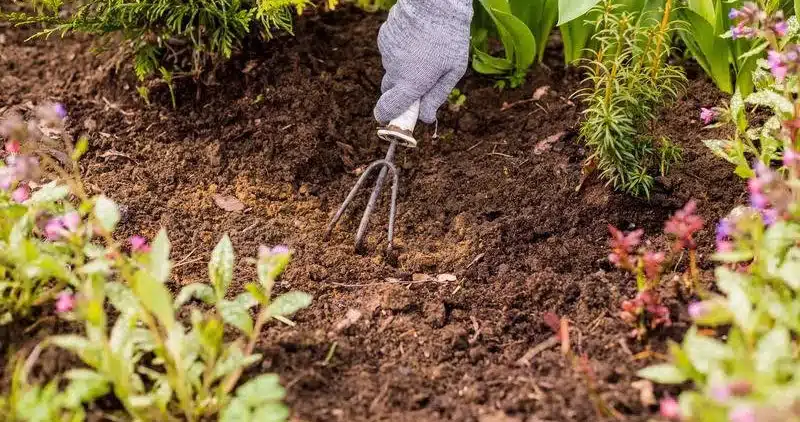
We recommend pulling weeds by hand after rain while the earth is still moist. Wear thick gloves to avoid prickles, blisters, or sap burns on the skin. It isn’t suitable for all weeds, including those with underground bulbs.
Use hand tools like broad knives and trowels to remove subsurface sections of weeds (such as bulbs) that may reshoot.
It may be required to dig out the plant’s crown in some circumstances. This necessitates a knife cutting the plant’s growth section beneath the earth.
What To Do with Leftover Weed Killer?
In dealing with do-it-yourself solutions, make sure to store them in a clean and dry area. Chemicals should be away from the reach of children.
Never pour them into the streams of water, especially the bleach solution. On the other hand, you can dispose of the vinegar, dishwashing, and boiling water diy weed killers into the sink.
Key Takeaways
There are many safe and inexpensive ways to get rid of this invasive species. Remember that while we seek to grow our garden healthily, we have environmental responsibility.
As much as possible, we should avoid using harmful and unnatural chemicals that may lead to pollution.
We hope that this article helped you discover that you have all the weed killer ingredients in your cupboard. Try out these 6 types of DIY weed killer!

